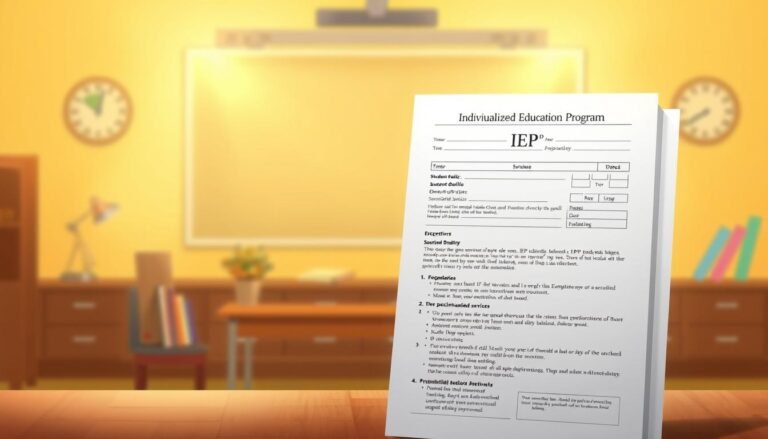Phonics for All: The Proven Way to Help Students with Learning Disabilities Thrive Through Inclusive Teaching
Introduction
In an educational landscape that strives for equality, the concept of Phonics for All has emerged as a beacon of hope for educators, parents, and most importantly, students with learning disabilities. With an increasing number of children facing various forms of learning challenges, the implementation of inclusive teaching methodologies that integrate phonics has never been more vital. This article will explore how inclusive phonics instruction not only makes reading accessible to all students but also fosters a thriving environment where every child can succeed, regardless of their learning differences.
The Importance of Phonics in Early Literacy Development
When discussing literacy, phonics is often at the forefront. Phonics teaches students the relationship between sounds and letters, serving as a foundational skill necessary for reading. But why is phonics particularly crucial for students with learning disabilities?
The Power of Early Intervention
Research has shown that early intervention in phonics can significantly impact a child’s reading abilities. A study from the National Reading Panel states that explicit instruction in phonics leads to improvements in reading, especially for struggling readers and students with learning disabilities. By focusing on phonics in the early stages of literacy development, educators can help mitigate the effects of various learning challenges.
Understanding Learning Disabilities
Learning disabilities vary widely, but many students struggle with phonemic awareness, a core skill in phonics instruction. Factors such as dyslexia, auditory processing disorders, and attention deficit hyperactivity disorder (ADHD) can complicate the learning process. Therefore, tailoring phonics instruction to meet diverse needs is essential.
Inclusive Teaching: An Overview
Inclusive teaching is an educational philosophy aimed at developing strategies and practices that accommodate all students, regardless of their abilities or disabilities. It promotes a sense of belonging, ensuring that every child can participate actively in their own learning.
Why Inclusion Matters
According to the U.S. Department of Education, children with disabilities benefit from receiving education alongside their peers without disabilities. This not only fosters social skills but also encourages an understanding of diversity and empathy among all students. Inclusive teaching represents an essential strategy in creating a supportive classroom environment where phonics can thrive.
Key Principles of Inclusive Teaching
- Universal Design for Learning (UDL): This framework emphasizes flexibility in teaching methods to accommodate diverse learners.
- Differentiated Instruction: Tailoring content, process, and products based on student readiness, interests, and learning profiles.
- Collaborative Learning: Encouraging teamwork among students fosters a sense of community and peer support.
Phonics for All: Strategies for Inclusive Teaching
Differentiated Phonics Instruction
Differentiated instruction is a cornerstone of inclusive teaching, allowing educators to customize phonics lessons. Here are key strategies you can implement:
1. Multi-Sensory Approaches
Using a combination of visual, auditory, and kinesthetic activities can engage all students. For example, while teaching the sound of the letter "B," educators might have students trace the letter in sand, listen to the sound, and say words that start with "B."
2. Flexible Grouping
Grouping students based on their phonics skills allows for targeted instruction. For instance, a small group of students struggling with vowel sounds could receive extra support, while advanced learners might explore more complex phonics rules.
3. Scaffolding Techniques
Breaking down tasks into manageable steps provides students with the support they need. As students become more confident, educators can gradually increase the complexity of their tasks.
Case Studies: Real-World Applications of Phonics for All
Case Study 1: The Success of Multi-Sensory Learning
Setting: A diverse urban elementary school
Focused Group: Second-grade students with varying learning disabilities
Strategy: Use of the Orton-Gillingham approach that incorporates multi-sensory activities.
Outcome: Students displayed a 30% increase in reading fluency after six months of targeted instruction.
Analysis: This case illustrates how incorporating multi-sensory strategies has made phonics acquisition more engaging and effective for diverse learners.
Case Study 2: Collaboration in Phonics Instruction
Setting: A suburban school district
Focused Group: Students with dyslexia, ADHD, and English Language Learners
Strategy: Team-teaching approach involving general and special education teachers.
Outcome: Improvement in overall reading scores by 40% within one academic year.
Analysis: This case reinforces the idea that collaborative teaching yields better results, proving the effectiveness of inclusive teaching methodologies.
Assessing Phonics Skills: Tools and Techniques
Evaluating phonics skills is crucial for informed instruction. Employing a mix of formative assessments, such as phonics screening tests and student observations, provides educators with essential insights.
| Assessment Type | Purpose | Example |
|---|---|---|
| Phoneme Segmentation | To assess sound blending abilities | Asking students to segment the word “cat” into /c/, /a/, /t/ |
| Word Mapping | To evaluate understanding of word structure | Breaking down the word “slightly” into syllables |
| Running Records | To track reading fluency and accuracy | Observing a student read aloud and noting mistakes |
Building a Supportive Classroom Environment
A positive classroom environment is vital for all students to thrive. Here’s how educators can create an inclusive atmosphere conducive to phonics learning:
1. Promote a Growth Mindset
Encourage students to embrace challenges and view failure as an opportunity to learn. This approach instills perseverance and resilience.
2. Foster Peer Support
Implement cooperative learning structures where students can assist each other. For example, partnering up strong readers with struggling peers can create opportunities for peer teaching.
3. Celebrate Diversity
By recognizing different learning styles and cultural backgrounds, educators can create an environment that values all voices. Incorporating literature from diverse authors can enhance connection and understanding.
Conclusion
In summary, Phonics for All: How Inclusive Teaching Can Help Students with Learning Disabilities Thrive presents a roadmap for educators aiming to create an equitable and dynamic learning experience. By utilizing inclusive teaching methodologies, differentiated instruction, and a supportive classroom environment, we can ensure that students with learning disabilities not only learn phonics but also develop a love for reading and learning that lasts a lifetime.
Now, it’s time for educators, parents, and community members to rally behind this cause and commit to making education accessible, engaging, and inclusive for all.
FAQs
Q1: What is phonics, and why is it important?
A1: Phonics is a method of teaching reading that focuses on the relationship between letters and sounds. It is important because it builds the foundational skills needed for effective reading.
Q2: How does inclusive teaching benefit students with learning disabilities?
A2: Inclusive teaching creates an environment where all students can engage, feel supported, and develop essential social and academic skills.
Q3: Are there specific phonics programs designed for students with learning disabilities?
A3: Yes, many programs are designed with accessibility in mind, such as the Orton-Gillingham approach and Wilson Reading System, which use multi-sensory techniques to enhance learning.
Q4: How can I differentiate phonics instruction in the classroom?
A4: You can differentiate instruction by using various teaching strategies, assessments, and grouping students based on their skills to provide targeted support.
Q5: What role do parents play in supporting phonics learning at home?
A5: Parents can reinforce phonics skills by reading with their children, providing phonics-based games and activities, and collaborating with teachers for consistency.
By understanding and implementing the strategies outlined in this article, educators can profoundly impact the lives of students with learning disabilities, creating a world where Phonics for All is not just a dream, but a reality.
















